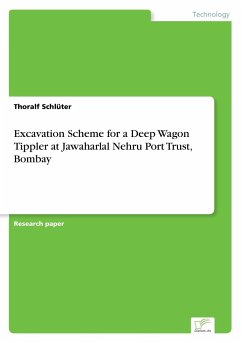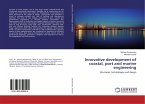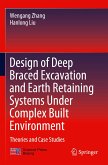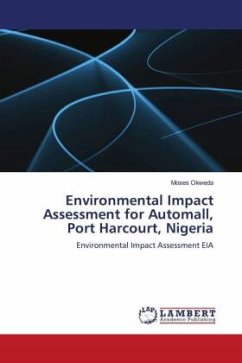Scholarly Research Paper from the year 2000 in the subject Engineering - Civil Engineering, grade: 1,3, Hamburg University of Technology (Bauingenieurwesen und Umwelttechnik), language: English, abstract: Inhaltsangabe:Introduction:
The Jawaharlal Nehru Port Trust, called JNPT, is situated close to Mumbai (former name Bombay) at the same channel used by Mumbai Port and Jawahar Dweep Oil Terminal. It is the youngest and most modern port of India. Commissioned in May 1989, the port still has high development ambitions especially in the sector of expansion, which is necessary in view of its purpose of decongesting Mumbai Port and the serving as a Hub Port for this region. The new Nhava Sheva Container Terminal Project is an example for the continuous progress in realising these plans.
In carrying out of these plans, structures like deep wagon tippler are required for managing bulk cargoes at the bulk terminals. This type of structure allows an economical unloading of cargoes from trains. Because of the necessary depth of a wagon tippler the cargoes have to surmount a difference in altitude of about 12 m from ground level and additional the difference in altitude from ground level up to the vessel. This can only be done by using long conveyor tunnels. An elevation of the cross section for a typical deep wagon tippler, borrowed from an existing structure.
In the first part of this project work, a review on different, often used schemes, for deep excavations is done to find out a favourable excavation scheme for construction of a deep wagon tippler. The choice for a structure using RCC diaphragm walls as retaining walls is based on its merits under the existing soil conditions and on a possible serving as part of the final structure. During a site visit to JNPT the decision for this type of excavation scheme was discussed with site engineers, who have experience in constructing RCC diaphragm walls under existing soil and groundwater conditions.
Finally an analysis of a typical cross section of the deep wagon tippler has been carried out by using the structural engineering software STAAD III, based on the Finite Element Method. The safety of the structure against failure caused on external and internal loads is proofed as well as for the case of an earthquake, which will be very possible, because of the location of the site in the earthquake zone four.
SUMMARY:
The aim of this project work was to work out an excavation scheme for the construction of a deep wagon tippler at JNPT Mumbai under actual loading condition. For solving this problem, first a comparison of different schemes for deep excavations was done. The final choice of using diaphragm walls supported by a deck slab as excavation scheme was based on its economical and structural merits compared with other types. During the site visit at JNPT a professional construction of a diaphragm wall could be studied. Discussions with site engineers were helpful to decide for this type of structure.
To find out a safety and economical structure, analyses for different types of diaphragm walls were done. In five steps the first structure, diaphragm walls with rectangular cross section and height of 25.6 m, connected with a deck slab, was modified to reach an optimal result in consideration of economical and static aspects. The choice of T-sections for the walls to take the large bending moments based on earth pressure, water pressure, dead load, live load and additional loads for earthquake case, turned out to be better than a rectangular section. It was possible to reduce the high deflection values of the walls. Comparing the T-sections with a thickness of 2.5m and 3.0m it was favourable to choose the light weightier structure.
A lighter structure will give a higher stability in case of earthquakes, so deflection values were almost the same. The saving of material and working time will help to make the structur...
Hinweis: Dieser Artikel kann nur an eine deutsche Lieferadresse ausgeliefert werden.
The Jawaharlal Nehru Port Trust, called JNPT, is situated close to Mumbai (former name Bombay) at the same channel used by Mumbai Port and Jawahar Dweep Oil Terminal. It is the youngest and most modern port of India. Commissioned in May 1989, the port still has high development ambitions especially in the sector of expansion, which is necessary in view of its purpose of decongesting Mumbai Port and the serving as a Hub Port for this region. The new Nhava Sheva Container Terminal Project is an example for the continuous progress in realising these plans.
In carrying out of these plans, structures like deep wagon tippler are required for managing bulk cargoes at the bulk terminals. This type of structure allows an economical unloading of cargoes from trains. Because of the necessary depth of a wagon tippler the cargoes have to surmount a difference in altitude of about 12 m from ground level and additional the difference in altitude from ground level up to the vessel. This can only be done by using long conveyor tunnels. An elevation of the cross section for a typical deep wagon tippler, borrowed from an existing structure.
In the first part of this project work, a review on different, often used schemes, for deep excavations is done to find out a favourable excavation scheme for construction of a deep wagon tippler. The choice for a structure using RCC diaphragm walls as retaining walls is based on its merits under the existing soil conditions and on a possible serving as part of the final structure. During a site visit to JNPT the decision for this type of excavation scheme was discussed with site engineers, who have experience in constructing RCC diaphragm walls under existing soil and groundwater conditions.
Finally an analysis of a typical cross section of the deep wagon tippler has been carried out by using the structural engineering software STAAD III, based on the Finite Element Method. The safety of the structure against failure caused on external and internal loads is proofed as well as for the case of an earthquake, which will be very possible, because of the location of the site in the earthquake zone four.
SUMMARY:
The aim of this project work was to work out an excavation scheme for the construction of a deep wagon tippler at JNPT Mumbai under actual loading condition. For solving this problem, first a comparison of different schemes for deep excavations was done. The final choice of using diaphragm walls supported by a deck slab as excavation scheme was based on its economical and structural merits compared with other types. During the site visit at JNPT a professional construction of a diaphragm wall could be studied. Discussions with site engineers were helpful to decide for this type of structure.
To find out a safety and economical structure, analyses for different types of diaphragm walls were done. In five steps the first structure, diaphragm walls with rectangular cross section and height of 25.6 m, connected with a deck slab, was modified to reach an optimal result in consideration of economical and static aspects. The choice of T-sections for the walls to take the large bending moments based on earth pressure, water pressure, dead load, live load and additional loads for earthquake case, turned out to be better than a rectangular section. It was possible to reduce the high deflection values of the walls. Comparing the T-sections with a thickness of 2.5m and 3.0m it was favourable to choose the light weightier structure.
A lighter structure will give a higher stability in case of earthquakes, so deflection values were almost the same. The saving of material and working time will help to make the structur...
Hinweis: Dieser Artikel kann nur an eine deutsche Lieferadresse ausgeliefert werden.








